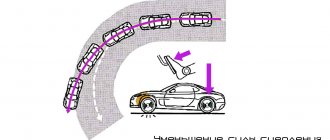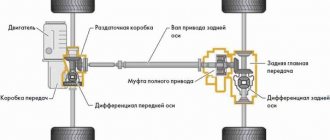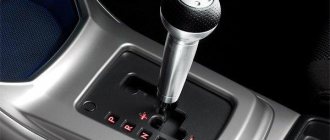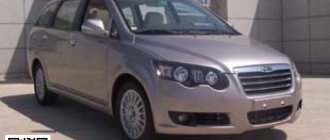HomeUsefulHow XDrive works
xDrive is an all-wheel drive system that is now used on every car in the entire BMW lineup. Many fans love this feature of the car, constantly arguing that it is better than quattro or 4Matic. Knowledgeable people know the nuances that lead to malfunctions. Today we will fully study this system and start with history.
History of appearance
All-wheel drive on Bavarian cars first appeared in the 80s, and xDrive itself in its classical sense appeared only in 2003. Over the course of time, there have been 4 generations, and now there are rumors about the release of a fifth generation.
All generations:
- 1st generation (1985-1990);
- 2nd generation (1991-1998);
- 3rd generation (1999-2002);
- 4th generation (since 2003).
First
The first generation of all-wheel drive appeared on the 3-Series e30, which normally distributed power between the axles in a ratio of 37:63. Traditionally, the BMW car remained rear-wheel drive, but when the center differential and viscous coupling were locked, the torque was divided equally between the axes. Blocking occurs only when there is slipping, which needs to be eliminated and the car leveled.
Second
The second generation of the all-wheel drive system was released in 1991 on the BMW 5-Series e34. Engineers changed the principle of operation, forcing the center differential to be locked through a multi-plate clutch, to which the electronic control unit sends signals. The rear differential was locked using an electro-hydraulic drive.
In the standard xDrive state, the torque is divided between the axes in a ratio of 36:64, but it is now possible to transfer all the engine power to one of the axles. The system analyzes wheel speed sensors, engine speed and brake pedal pressure, and then distributes torque for better efficiency.
The new system was warmly received by buyers, and the reviews were excellent. Plus, it increased the company's overall sales.
Third
In 1999, the first generation of the BMW X5 appeared, on which the xDrive all-wheel drive system debuted in its classic modern sense. In the normal state, the torque is distributed in the ratio 38:62. The ability to give all the power to one of the axles has been preserved. Now the differentials are free, the locks are simulated by connecting the system with the brakes. By braking different wheels, the impression of blocking is created. The system is complemented by ESP exchange rate stabilization.
The system allowed the crossover to show good results on light off-road conditions, while remaining just as stable on asphalt.
Fourth
Currently the latest generation of Bavarian all-wheel drive. There are even more electronics that control everything that happens to the wheels and the car. Electronic center differential locks operate via a multi-plate clutch.
The axle is locked electronically, plus the mechanism cooperates with the Dynamic Stability Control (DSC) system. In the standard state, the torque is distributed among the axes in a ratio of 40:60, the system can give up to 100% to one of the axes. The fourth generation has been modernized several times and now the torque is distributed among the wheels depending on the best grip.
History of the xDrive all-wheel drive system
As we have already noted, the xDrive permanent all-wheel drive system was first introduced to the public in 1985, when the new BMW 325iX was born. Then this car was exhibited at the International Motor Show. At that time, the engineers' decision to distribute torque unevenly between the axles was innovative. 37% went to the front axle, while the remaining 63% fell on the rear pair of wheels. Even then, the clutch was used, which we described in such detail in the article about 4motion. Thanks to this device, the rear and center differentials were locked.
Thanks to this solution, the car demonstrated excellent cornering performance due to the ideal road grip at that time. Many noticed that the first “troika” often suffered from oversteer. However, the all-wheel drive system did its job perfectly. The Internet is teeming with photographs of the first models, in which the cars are captured at the moment of an aggressive and sharp turn. Due to the distribution of torque and impressive weight, the car could surprise with its predictable readiness to take any, even risky, turn.
The second generation xdrive BMW all-wheel drive system dates back to 1991. Engineers made only spot and corrective changes to the all-wheel drive. Now the differential was locked thanks to an electromagnetically controlled disc clutch. As for the torque distribution, as already noted, there were no significant changes. Then 36% came to the front axle, and 64% to the rear axle. By the way, now xDrive has the ability to freely redistribute torque in the range from 0 to 100% to one of the axles.
But starting with the third generation of the system, the Germans began to gradually give preference to the front axle, sending 2 percent of the torque distribution to the front pair of wheels. Now xDrive was actively used on all cars of the Munich auto brand and was a registered trademark. Since 1999, BMW cars equipped with xDrive have received a torque distribution of 38:62. In addition, the xDrive system interacted with the dynamic handling control system. Well, since 2003, the torque has been distributed in the form of 40 to 60. The developers have added some more electronics for xDrive to help, which made it possible to achieve fantastic wet road grip results.
All wheel drive system xdrive bmw
How xDrive works
The torque is distributed along the axes through a transfer case, which consists of a gear drive controlled by a friction clutch. On X5M type machines, a chain drive is installed instead of a gear drive.
The power is distributed along the axes depending on the compression force of the clutch clutches. The main lever with an expansion mechanism converts the rotational movement of the shaft into its own, thereby compressing the clutches.
With the rear clutch locked, torque from the rear axle is immediately transmitted to the front wheels through the transfer case. The technical part of the transfer case depends on the body type. Sedans, due to their small dimensions, use a gear type; crossovers, due to the large space in the cabin, use a chain drive.
Composition of xDrive all-wheel drive:
- front cross-axle gearbox;
- checkpoint;
- front axle drive shaft;
- transfer case with an electronically controlled clutch;
- cardan;
- rear cross-axle gearbox.
Transfer case design:
- front axle drive;
- servo motor control cam;
- idler gear;
- drive gear;
- main lever;
- multi-disc clutch;
- rear axle drive;
- servo motor;
- clutch package;
- drive gear;
- servo motor drive gear.
Composition of the transfer case with chain drive:
- input shaft;
- main release lever;
- multi-disc clutch;
- output shaft to rear wheels;
- release mechanism;
- servo motor control disk;
- lever arms;
- chain;
- output shaft to the front axle.
Since 2006, the DSC system has appeared, which distributes torque separately to the rear wheels. The system's goal is to improve the car's turning ability. This happens due to two planetary gears and electronically controlled multi-plate friction clutches.
Active stabilization ESP and electronic locking systems that brake the wheels also help in xDrive operation.
Operating modes
When driving a car, the all-wheel drive system operates depending on a certain mode:
- normal state;
- front axle demolition;
- rear skidding;
- parking;
- slippery track.
xDrive behaves differently in different modes. In the first case, up to 20 km/h the torque is distributed 40:60, but after that the analysis of the car’s behavior and the efficiency of the redistribution begins.
When turning sharply, the car's face often blows off; in this case, the main engine output goes to the front wheels. If necessary, ESP is activated to level the vehicle. In the third case, when the rear axle skids, all the power is given to the rear wheels and ESP is activated.
xDrive all-wheel drive senses when you're in a parking space, so power is sent entirely to the rear wheels to make steering easier.
In the latter case, the system works almost constantly, analyzing the best traction, distributing torque as efficiently as possible.
BMW xDrive Days
BMW xDrive
permanent all-wheel drive system adapts flawlessly to the most challenging conditions, always ensuring excellent traction. Thanks to the xDrive and DSC systems, the car maintains directional stability and controllability. Reacting in fractions of a second, xDrive dynamically redistributes traction between the front and rear axles to ensure optimal traction. Thus, the xDrive combines the advantages of all-wheel drive - high-quality traction, directional stability and safety - with classic BMW .
Take advantage of special conditions on BMW xDrive and gain confidence on icy and snowy roads.
| Model | Equipment | Color | Price | Special offer |
| xDrive20d Basic | White Mineral | RUB 2,596,100 | Call! |
| xDrive20d Basic | Sparkling Brown | RUR 2,676,200 | Call! | |
| 320i xDrive M sport | Snow-white | 2,390,000 rub. | Call! |
| 320i xDrive M sport | Black Sapphire | 2,390,000 rub. | Call! | |
| 320i xDrive M sport | Black Sapphire | 2,390,000 rub. | Call! | |
| 320i xDrive M sport | Black Sapphire | 2,390,000 rub. | Call! | |
| 320d xDrive Sport Line | White Mineral | 2,390,000 rub. | Call! | |
| 320d xDrive Basic | Snow-white | RUB 2,730,132 | Call! | |
| 528xi LCI Basic | White Mineral | 3,090,000 rub. | Call! |
| 528xi LCI Basic | White Mineral | 3,090,000 rub. | Call! | |
| 528xi M-sport | Snow-white | 3,370,000 rub. | Call! | |
| 528xi M-sport | Snow-white | 3,370,000 rub. | Call! | |
| 528xi M-sport | Snow-white | 3,370,000 rub. | Call! | |
| 528xi M-sport | Snow-white | 3,370,000 rub. | Call! | |
| 528xi Luxury | White Mineral | 3,610,000 rub. | Call! | |
| xDrive20i | White Mineral | 2,860,000 rub. | Call! |
| X3 xDrive20i | Red Melbourne | RUB 2,866,964 | Call! | |
| X3 xDrive20d | White Mineral | 2,910,000 rub. | Call! | |
| X3 xDrive20d | Black Sapphire | 2,910,000 rub. | Call! | |
| X3 xDrive20d | Black Sapphire | 2,910,000 rub. | Call! | |
| X3 xDrive20d | Sparkling Brown | 2,910,000 rub. | Call! | |
| xDrive25d Business | Snow-white | 4,000,000 rub. | Call! |
| xDrive25d Business | Snow-white | 4,000,000 rub. | Call! | |
| xDrive25d Business | White Mineral | 4,000,000 rub. | Call! | |
| xDrive30d Prestige | Black Sapphire | 4,570,000 rub. | Call! |
| xDrive30d Prestige | Sophisto gray diamond effect | 4,570,000 rub. | Call! | |
| xDrive35i Prestige | Sophisto gray diamond effect | 4,570,000 rub. | Call! | |
| xDrive35i Prestige | Black Sapphire | 4,570,000 rub. | Call! | |
| xDrive30d Luxury | Black Sapphire | 4,980,000 rub. | Call! | |
| xDrive30d Prestige | Black Sapphire | 4,660,000 rub. | Call! |
Receive an individual offer
Malfunctions
The first sign of problems with the transfer case will be indicated by a light on the dashboard:
- 4×4;
- ABS;
- Brake.
The indicators appear periodically, then more and more often, and in the end they just stay on constantly. There can be many reasons; first you need to look for electrical problems, and then study the technical malfunctions of the servomotor.
The main technical problems are related specifically to the servomotor connected to the front wheels. The xDrive transfer case itself is quite reliable; it is the servo drive that often causes problems. The servo drive’s Holp sensor “flies” or the brush commutator breaks. In this case, the car will simply become permanently rear-wheel drive.
If the servomotor in the middle breaks and the transfer case is not turned on, then you cannot drive the car - the gearbox will die.
The transfer case lives 100-120 thousand kilometers with timely oil changes, and its degree of wear can be checked by the condition of the oil. Unscrew the drain plug and pour a little oil onto a napkin. If there are black shavings or a burning smell, the transfer case needs to be replaced.
If the rear wheels whistle when turning or jerk during acceleration, you should visit the diagnostics department. This symptom also indicates problems with the servo drive.
Do not forget to change the oil in xDrive gearboxes in a timely manner, because if you forget about it, you will wait for the hum of the gearboxes, which will later have to be changed.
For careful drivers, parts last a long time, but the metal itself ages, which leads to deterioration of the splines and crosspieces of the universal joint, as well as to failure of the rear universal joint bearing.
There are also cases when, during a sharp turn, X-Drive throws all its power onto one wheel that has the best grip. Yes, this should allow you to turn as efficiently as possible, but the gearboxes cannot withstand such a load.











